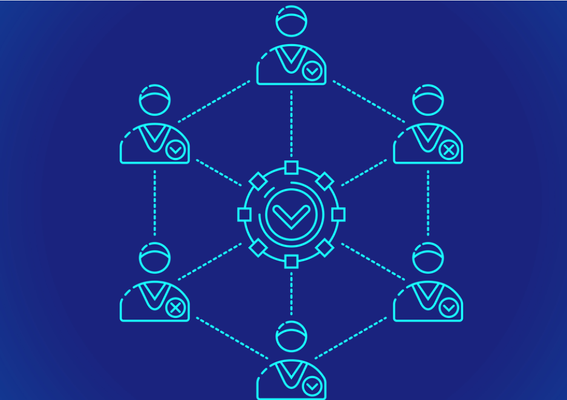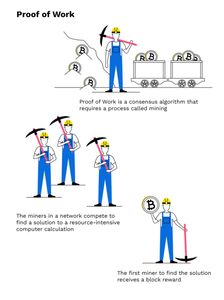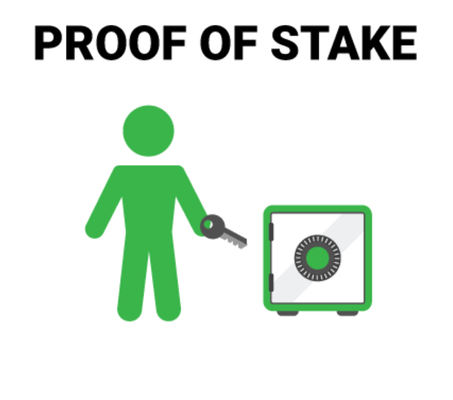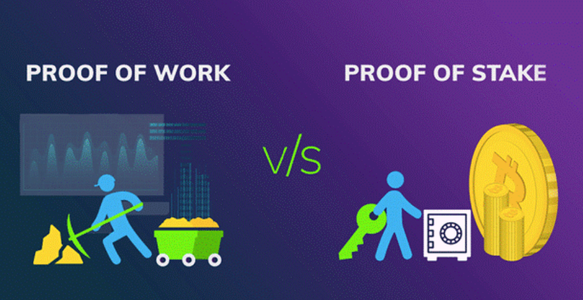Introduction

Source
I looked up the word Consensus in the dictionary and found out the definition;
A process of decision making that seeks widespread agreement among group members.
Applying this idea to the blockchain, it can be said that an agreement has to be reached by all nodes of the Blockchain on who and how a block is validated.
Speaking of 'how', there are different types of consensus mechanism adopted, which includes the following:
•PoW
•PoS
.png)
PoW

Source
Advantages
- This allows for a common objective, which is to mine the coins. All the participating nodes know this and needs no further action or command to do its duty.
Disadvantages
- Energy consuming
In the early days of BTC, the equations could be solve with just a single laptop or a PC but that's no longer the case. There are several machines built just for the purpose of solving these equations for example, we have the Graphics card ,the ASICs( Application Specific Integrated Circuit) and also Mining farms. To accommodate all these numerous nodes the equations has become more and more complex. Of course only one of all these nodes gets to solve the equation so this essentially means that all the other nodes which didn't solve the equation has wasted electricity/power/energy.
According to digiconimist, BTC miners alone makes use of about 54TWh(Tera watts hours) of electricity, which is enough to power the whole country of new Zealand or Hungary.
- Distribution; Risk of 51% Attack
There something known as mining pool where different miners (nodes) can come together and mine collectively so as to increase their chances of solving the equation and therefore chosen to mine the next block.
This 51% attack has to do with a person or a group of persons having more than 51% control of the system, in this case the nodes. This can pose a big threat to the Blockchain as that person has significant amount of power and control over the system. In the case of pow, there are 2 ways this can be achieved,
Firstly is by purchasing a lot of computing power to more than 51% of the total computing power and secondly by merging or the top 3 mining pools which will be well over 51% of the total mining farm.
Sopposing a bad node is able to achieve this feat, then its bad news for the Blockchain. This could be
- The computers may not have any other incentive other than earning rewards of the block, they may not really care about the particular coin in question and may switch over to mine another coin which they deem more profitable.
.png)
PoS

Source
Disadvantages of PoS
- The most glaring disadvantage is that the method of chosing a validator may not be entirely randomized as the amount of staked coins has to be considered and factored in. If person A stakes coins worth of $100 and person B stakes coins worth of $1000, then person B definitely has the greater chance of being picked. This can lead to a circle effect because person B now has the rewards and therefore more coins to stake which ultimately increases the likelihood of being chosen.
This can be looked as as the Rich getting Richer and the Poor getting Poorer kind of stuff. Those who get in first or stakes more, has a higher chance.
- Then there's also the 51% attack
This is unlikely to occur here than in PoW especially in a situation where the coin is not a new one. The node which attempts this will have to buy more than half of the total coins in the circulation. Doing so will drive up the prices thereby making it too costly to acquire. Although this seems highly unlikely, its not impossible.
.png)
Differences between PoW and PoS

Source
| PoW | PoS |
|---|---|
| Energy consuming: requires a lot of computer power in order to solve the equations and mine blocks | Energy efficient; doesn't require computer power but some staked amount of coins in order to choose it's validators |
| Everyone can mine | Selects a few validators |
| Its more expensive to set up thereby decreasing scaling capacity. | Requires a less expensive setup and which is an advantage for the scaling capacity |
| Here the nodes are referred to as miners. | Nodes are referred to as validators |
| The coins are mined here | The coins are minted or Forged |
| Examples of some coins using this method includes: BTC, Ethereum, litecoin etc. | Examples of coins using this method includes; Binance, Algorand, Cardano etc. |
Thanks for reading through, this has been an awesome experience.
Peace.
Congratulations @justice007! You have completed the following achievement on the Hive blockchain and have been rewarded with new badge(s) :
Your next target is to reach 900 upvotes.
You can view your badges on your board and compare yourself to others in the Ranking
If you no longer want to receive notifications, reply to this comment with the word
STOPCheck out the last post from @hivebuzz:
Support the HiveBuzz project. Vote for our proposal!
Yay! 🤗
Your content has been boosted with Ecency Points, by @justice007.
Use Ecency daily to boost your growth on platform!
Support Ecency
Vote for Proposal
Delegate HP and earn more